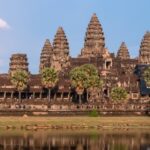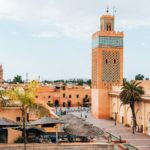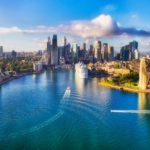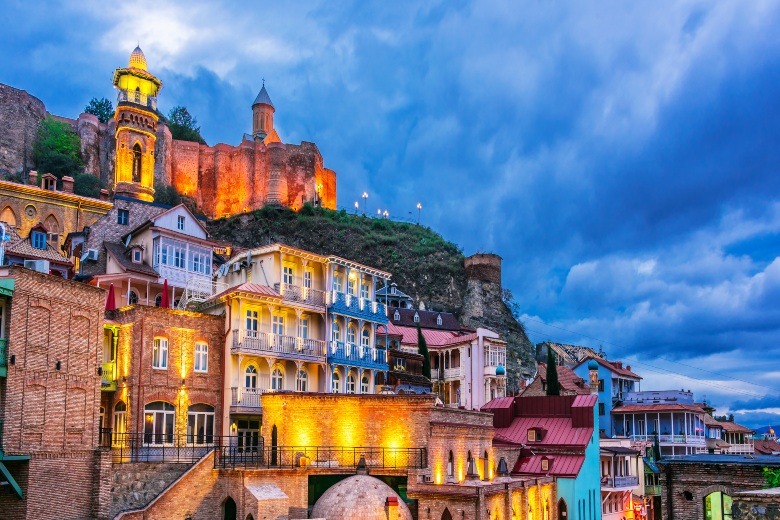
Tbilisi is the capital city of Georgia, which lies next to Armenia and Azerbaijan, at the convergence of Europe and Asia.
Georgia has a complicated diplomatic history, having been under both Russian and Prussian rule, before declaring independence from the former Soviet Union in 1991.
Today, the head of state is Salome Zourabichvili, the 5th president of the country and the first female leader.
History lesson aside, Georgia is a beautiful country, and Tbilisi is especially so. With ornate, fairytale-like architecture, a blossoming art and music scene and delicious local cuisine, Tbilisi is a wonderful place to visit.
Here’s a list of some of the top must-see attractions in Tbilisi…
Old Tbilisi
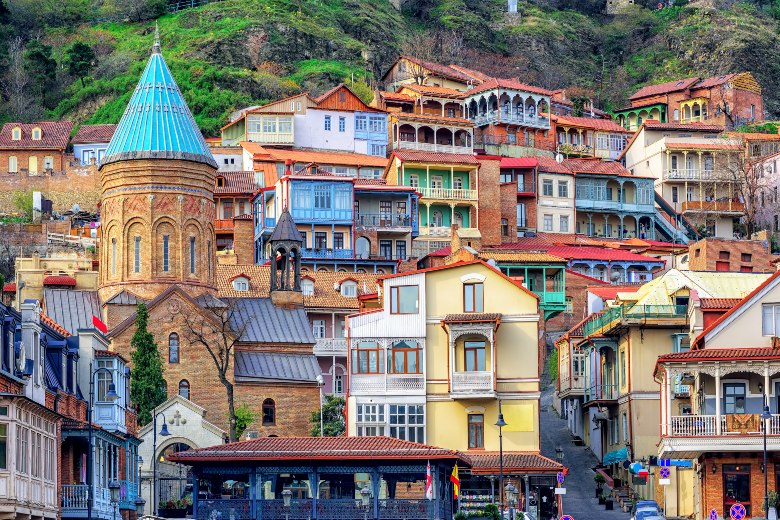
Old Tbilisi (Dzveli Tbilisi) is a large historic neighbourhood that is famous for its old, winding streets and lanes, its beautiful and colourful traditional houses as well as restaurants serving delicious local cuisine.
The Old Town is also home to the National Botanic Gardens, Sulphur Baths, Narikala Fortress and many other national landmarks. Most of all, Dzveli Tbilisi sums up the city’s unique charm and beautiful atmosphere, giving you a snapshot of what makes this place so special.
Tbilisi Sioni Cathedral
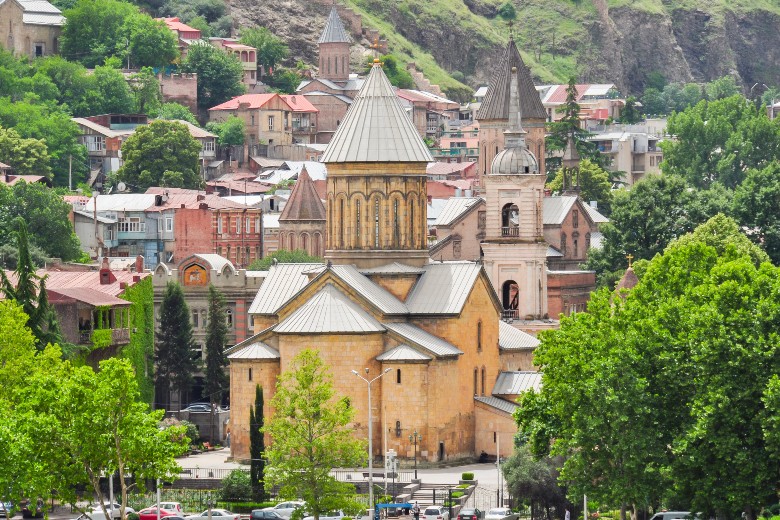
The Sioni Cathedral of the Dormition (in Georgian სიონის ღვთისმშობლის მიძინების ტაძარი in case you were wondering) is a Georgian Orthodox cathedral. The name ‘Sioni’ is taken from Mt Zion in Jerusalem since it was tradition to name cathedrals after places in the Holy Land.
The cathedral is located on the banks of the River Kura, making it a lovely visage for tourists to admire. It was initially built in the 6th and 7th centuries, and since then has been repeatedly destroyed and always rebuilt again.
Aerial Tramway
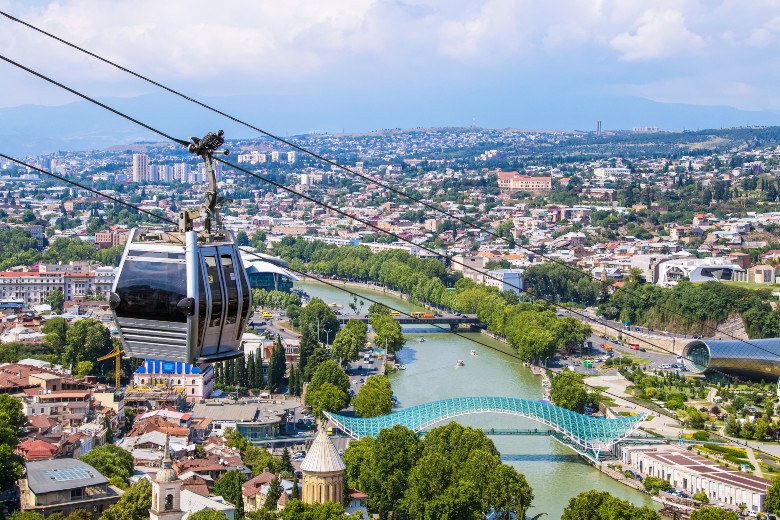
The Aerial Tramway cable car system is one of Tbilisi’s greatest attractions. The cable cars provide spectacular views of the city below, as they take on a sightseeing tour where you can stop off at different landmarks, such as Narikala Fortress.
As long as you don’t mind heights, this is without a doubt one of the best and most exciting ways to explore the city. No sore feet, no expensive cab rides, just one simple journey that shows you everything.
Jinvali Water Reservoir
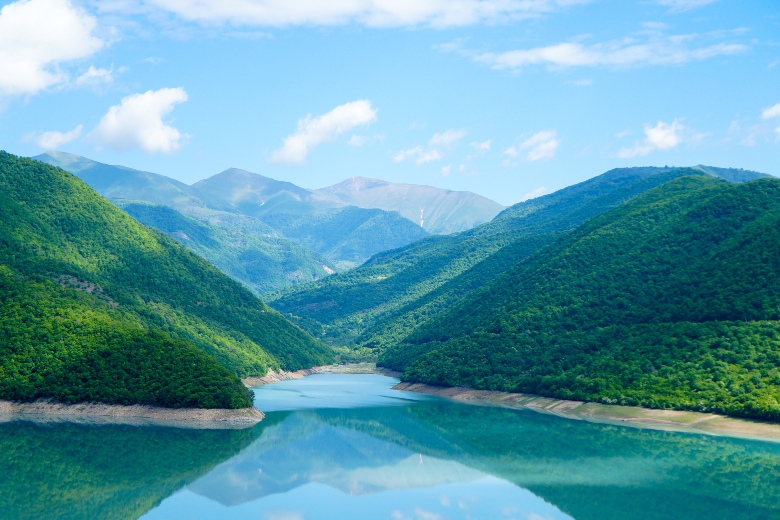
The Jinvali Water Reservoir is a huge, crystal clear lake that would look perfectly at home in the Swiss Alps. You can get some truly stunning holiday photos here, and it’s a great place if you’re looking for an oasis in nature away from the hustle and bustle of the city.
At points around the lake, you’ll find decorations that have been hung up including gigantic hearts and swings that make exponent photo props. There are also plenty of cafes where you can relax and enjoy a drink whilst looking out over this beautiful vista.
Lake Lisi
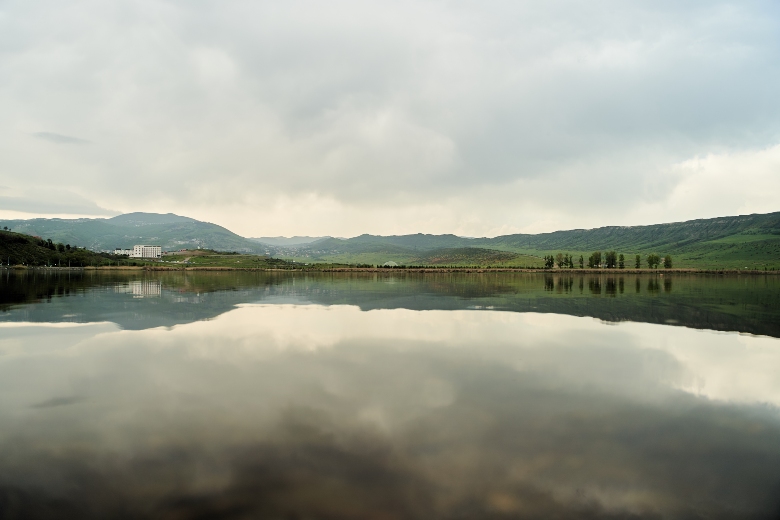
Lake Lisi is a medium-sized lake located in the Kura River Valley. The landscape here is beautiful but rugged, with a dry arid climate and sparse vegetation, unlike the Jinvali reservoir which is known for its lush surroundings.
Lake Lisi looks especially lovely in winter when the water begins to freeze over and the grass is covered in a fine powder dusting of shimmering frost.
Turtle Lake
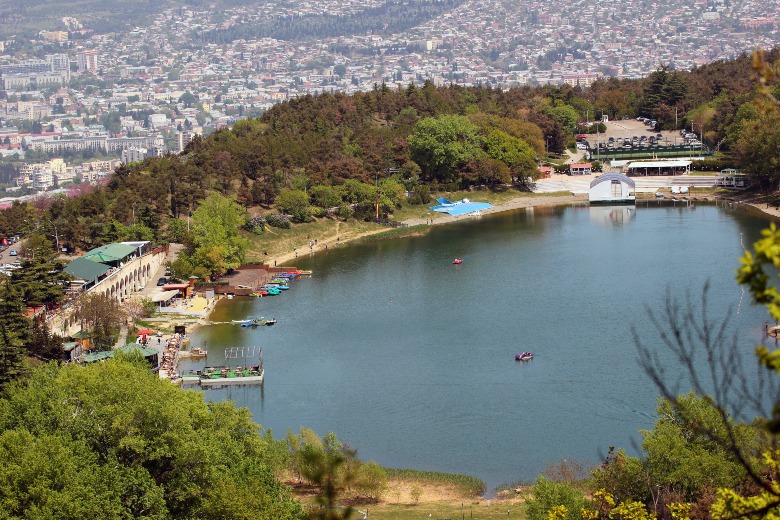
Turtle Lake is a smaller lake and a more intimate location. It can be found on the outskirts of the city and is an equally lovely place in summer and in winter. If you fancy taking a short walk and getting some fresh air, then this is the place to go.
The name ‘Turtle Lake’ is the English translation of its Georgian name ‘Kus Tba’. occasionally the lake is also referred to as K’orki’i.
National Opera and Ballet Theatre
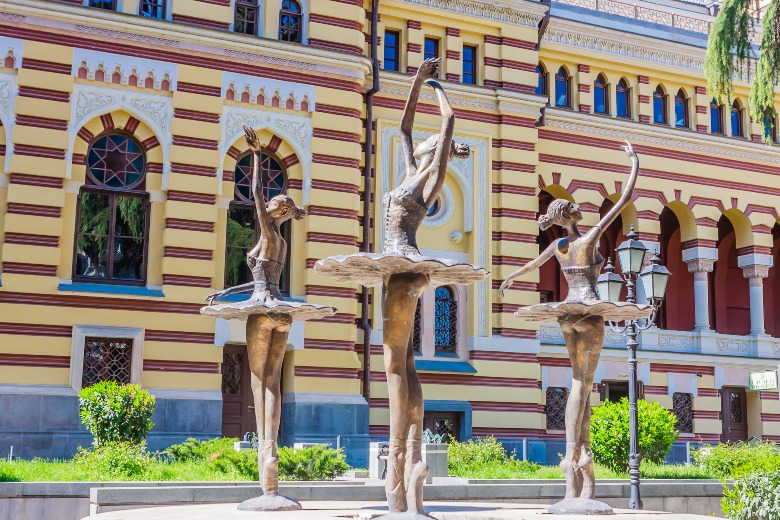
Tbilisi is a true hub of the arts, and the National Opera and Ballet Theatre is one of many theatres found here. Others include the Rezo Gabriadze Marionette Theatre, the Rustaveli Theatre, the Alexander Griboedov Theatre, the Marjanishvili Theatre and the Armenian Drama Theatre of Tbilisi.
The Opera and Ballet Theatre is the city’s main opera house, and one of the oldest establishments in Eastern Europe. It was founded in 1851 and has been carefully preserved and restored while ensuring its original structure is faithfully kept intact.
There’s also a beautiful fountain next to the theatre with statues of elegant ballerinas adorning it.
Narikala Fortress
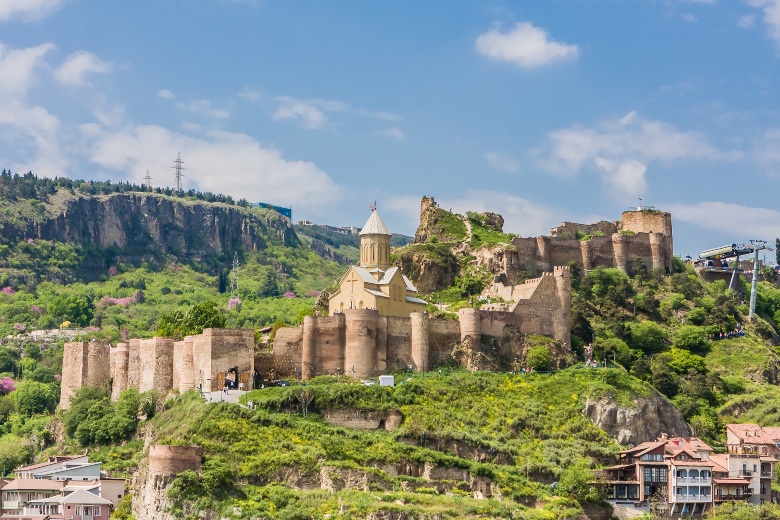
The Narikala Fortress is an ancient construction that overlooks Tbilisi. The fortress is set on a steep hill, above the river Mtkvari, and between the Sulphur Baths and Botanical Gardens.
The fortress was first built in the 4th century, and it acted as a citadel for the Persian Empire. It was frequently used as a first defence if the city was ever under attack, meaning it was a very valuable asset.
Bridge of Peace
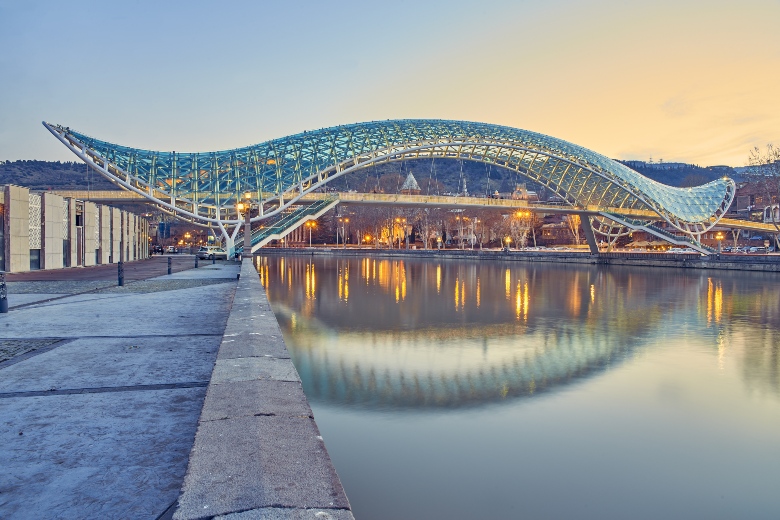
Tbilisi is full of old and ancient wonders of culture and architecture, but it is also home to several modern landmarks. One of the most iconic of these is the Bridge of Peace, a bow-shaped pedestrian bridge that crosses the Kura River.
The bridge links Dzveli Tbilisi with Rike Park and is a very concint way to get from one place to the other. It is also a great place for photos, due to its unique shape and brightly lit LED facade.
National Museum(s)
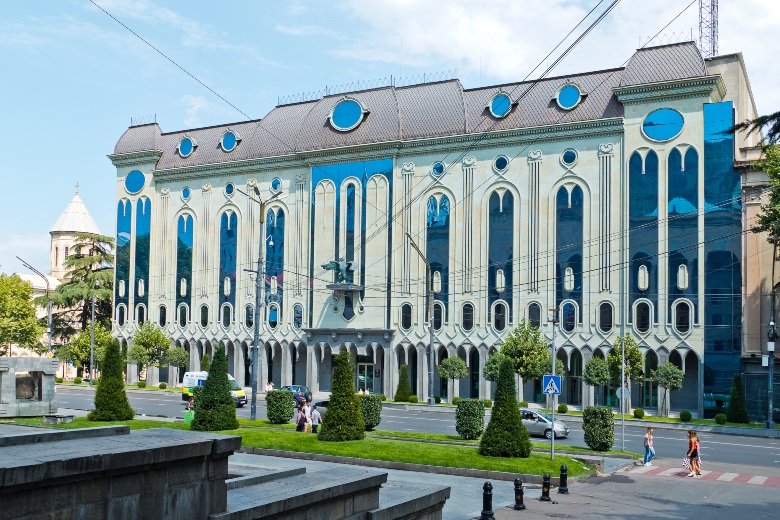
The National Museum is a world-class museum complex. It integrates Tbilisi’s museums into one legal structure. The museums that fall under its banner that you can visit in Tbilisi include:
The Simon Janashia Museum of Georgia, Samtskhe-Javakheti History Museum, Open Air Museum of Ethnography, Art Museum of Georgia, Tbilisi, Museum of the Soviet Occupation, Dmanisi Museum-Reserve of History and Archaeology, Vani Museum-Reserve of Archaeology, Museum of History of Tbilisi, Museum of History and Ethnography, the Institute of Palaeobiology and the Sighnaghi Museum.
National Botanic Garden
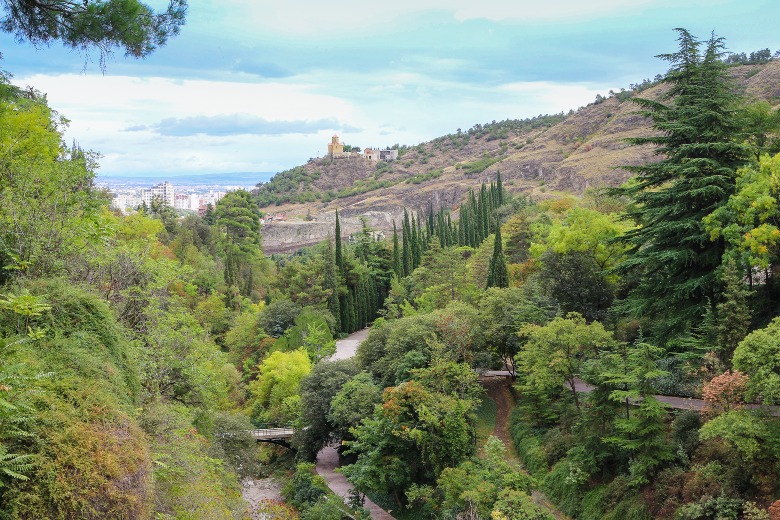
The Tbilisi National Botanic Garden can be found on the foothills of the Sololaki Range and covers an area of over 160 hectares. The history of this area spans over three centuries and is believed to have been founded around 1625.
Many notable public figures and scholars have worked on designing and expanding the garden, and throughout the years it has stayed true to the philosophy of helping nature along without changing it too much.
Mtatsminda Pantheon of Writers and Public Figures
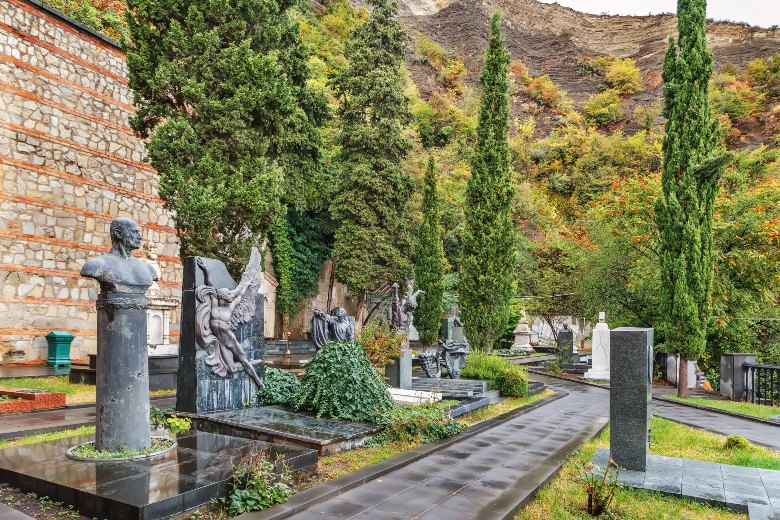
The Mtatsminda Pantheon of Writers and Public Figures is a necropolis where some of Georgia’s most iconic national heroes and famous figures are buried. It’s located right next to the Botanic Garden.
The pantheon, which was established in 1929, is located on the slopes of Mt Mtatsminda. It is the final resting place of many notable figures. The first famous people to ever be buried here were Alexander Griboyedov, a Russian writer, and his wife.
National Gallery
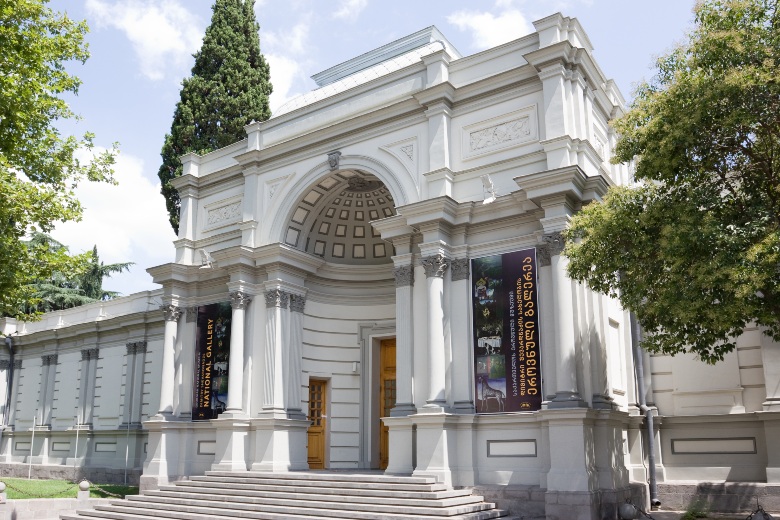
The National Gallery is located on Rustaveli Avenue. It is often referred to by locals as the Blue Gallery, because of the blue paint that covered the facade. Although the building has now been painted grey, the name is still sometimes used.
The gallery is home to many beautiful and valuable paintings from a variety of artists, both local and international. You can explore displays on Georgian Modernism, Avant-garde styles and much more. There’s also a cafe and gift shop where you can pick up some lovely souvenirs.
Tbilisi Auto Museum
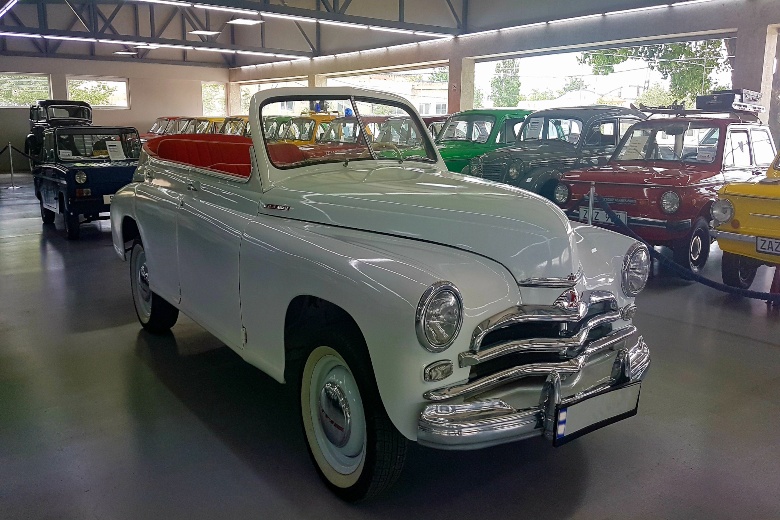
If you’re a fan of classic cars, this is the place for you! The Tbilisi Auto Museum has an incredible collection of rare, vintage cars on display, and it only charges a small entrance fee.
The museum is based around a private collection of vehicles, which was put together over twenty or so years. Today, visitors can come and see perfectly restored and polished parts of history here. There is also a focus on Soviet-era military vehicles as well as sports cars and motorcycles.
Kartlis Deda Statue
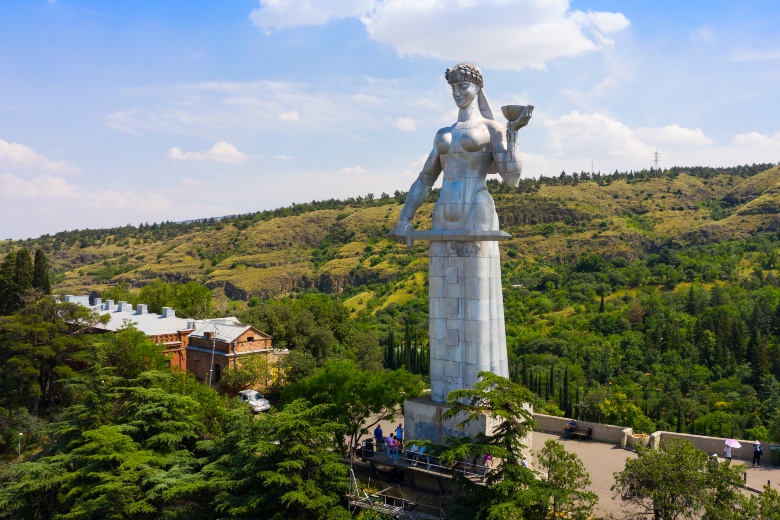
The Kartlis Deda Statue, also known as the Mother of Georgia statue, is a 20 metre tall aluminium structure that stands at the top of the Sololaki hill, watching over the city.
The statue was erected in 1958, to commemorate Tbilisi’s 1,500th anniversary. It was designed by the famous Georgian sculptor Elguja Amashukeli and depicts a woman in a national dress standing proudly. It’s a very iconic statue that artistically captures the essence of the noble heritage of the people of Georgia.

